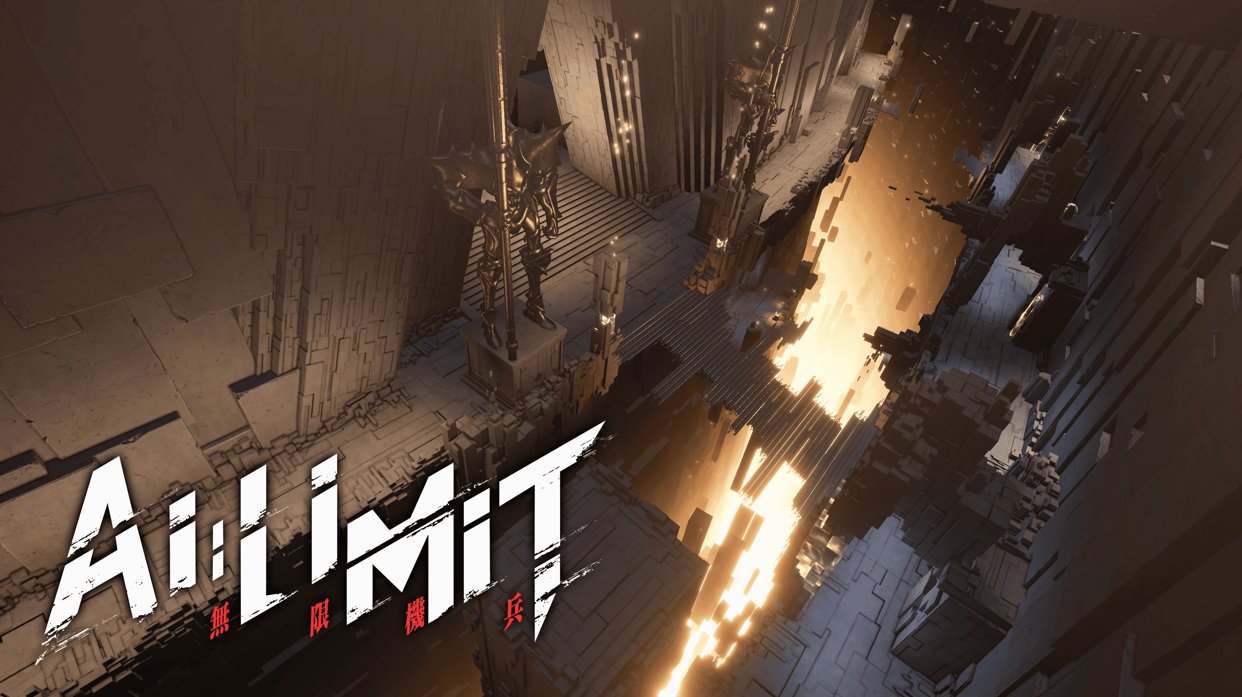Already seen by many as a Code Vein successor/imitator, mainly because it combines soulslike gameplay and anime aesthetic, AI Limit steps into a crowded genre with the weight of comparison on its shoulders from its first echoing footfall. Its post-apocalyptic, it’s dark chasm-like expanses are full of challenging combat encounters fought by schoolgirls in ripped clothing – in many ways we think we’ve seen it all before.
But maybe Code Vein isn’t the game to compare AI Limit to? Maybe it’s really closer to Stellar Blade? Sure, there’s soulslike gameplay on the surface, but it’s not based on stamina and it has its own feel and combat flow mechanics; sure it has little teardrop bonfires (here called branches) and EXP to level up your Blader’s stats, but you don’t lose all that EXP on death, or need to re-collect it, much like Stellar Blade.
Soulslike action titles need an unbiased assessment when the market is as flooded as the post-apocalyptic streets we fight for. Let’s see what AI Limit is doing differently, and where it shines like a refined crystal, or where it falls short like a doomed run to the safety of the branch.
We Come From Mud And We End In Mud
Fromsoft and their souls titles never really set the world on fire for their plot or character – it’s always the depth of lore and mythology where they shine. As such the genre has rarely leaned fully into a narrative-driven experience. AI Limit is different – although plenty of time is taken to cover ancient happenings, it has vastly more NPCs and integrated questlines than your average soulslike. NPCs and their quests are central to your playthrough here, and helped ground the whole narrative in human interactions.
In the very far future, our present day is ancient history, and huge architectural behemoths tower across the landscape. After numerous wars, the world is so blighted that humankind barely lives anywhere in comfort. Instead they pilgrimage slowly towards the last flooded city bastion of Havenswell. However Havenswell has its own problems – the streets are overrun with the destitute, the Necro (abominable zombie-like creatures) stalk the lost, and a despotic mechanised AI church lies to and manipulates the last dregs of humanity. A strange dystopian muck, simply called The Mud, both sustenance for the impoverished and decomposer of the world that came before, is corrupting everything it touches. But from the Mud comes hope.
Most souls-type games from Lords of the Fallen to Elden Ring put you in the shoes of an avatar who gets reborn over and over, be that as Tarnished, Lamp Bearer or Revenant depending on the IP you’re playing. In AI Limit you are a Blader, a synthetic doll powered by artificial intelligence and borne from the Mud, tasked with reaching that walled-off world of the humans who remain in this blighted domain.
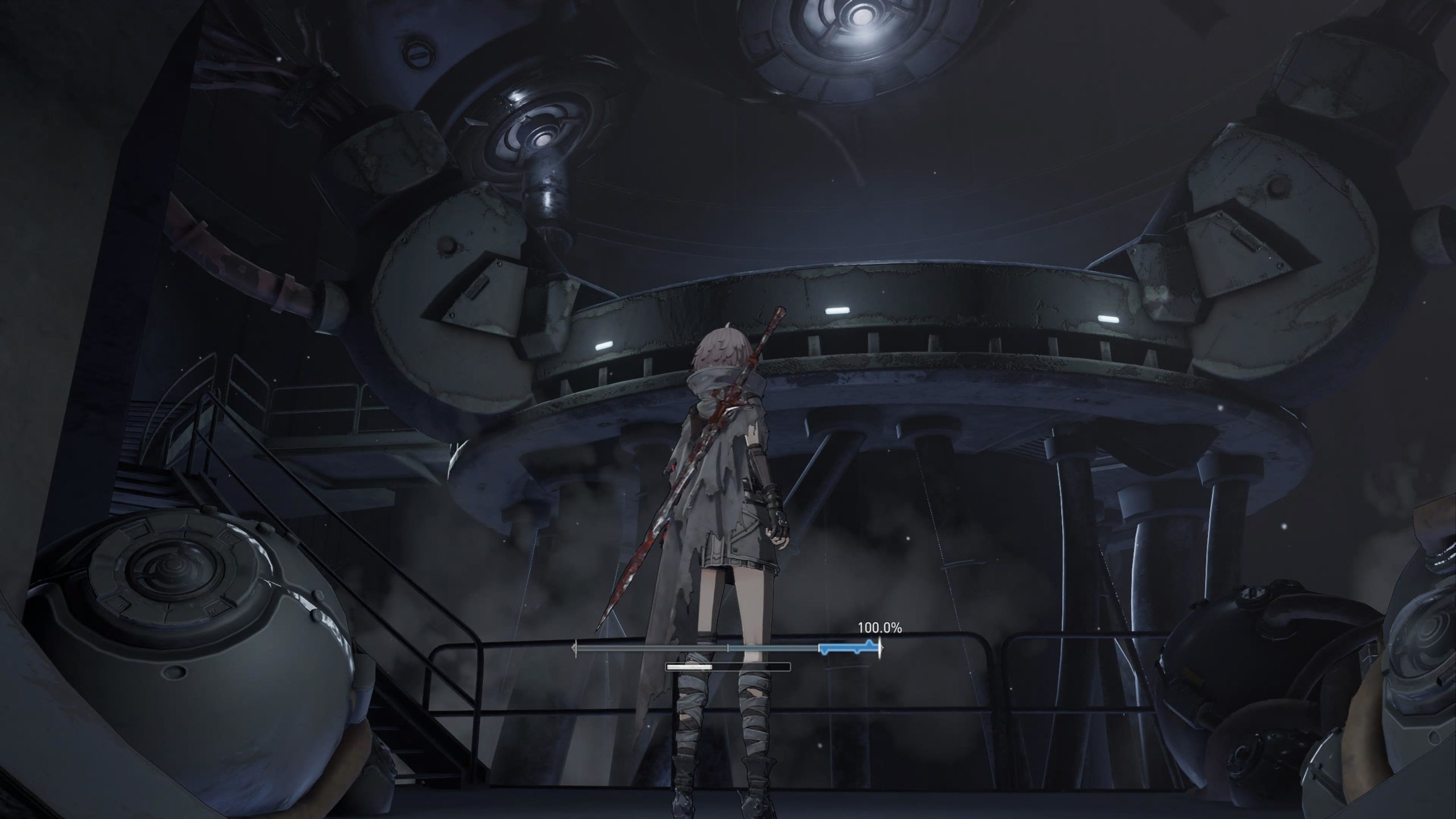
You are given the task of awakening the branches (AI Limit’s bonfires) of an ancient tree, but why or what will happen when you do is shrouded in mystery until the very end. Most bladers have been around so long they’ve abandoned the task assigned them, and chosen their own way.
There are a number of NPCs who will be making the same journey as you, moving from location to location as you complete various, often unrelated, actions. There is the sad orphan girl on a pilgrimage, the necro hunter who keeps losing his limbs, and a coffin-dragging old man to detail a few, but to go into detail on any would verge on spoilers for those who care for these side quests. Suffice to say they have more to say than any NPCs ever has in a Dark Souls game, and they are the real crux of any present narrative during your playthrough.
Towards the end the NPCs became far more interesting, outlining a war between the Church and the Necros, the final destination of the human’s pilgrimage and a dark future where religion had been corrupted beyond even its present-day farce. I was really glad AI Limit didn’t rely on tableau memories that play out scenes of the dystopian fall, a motif that Code Vein overdid massively, and its welcome in its absence here.
AI Limit’s narrative does more than the necessary. It creates a world perhaps more interesting than its parts, that was compelling enough in design to warrant being explored. It succeeds more on level design, mazes and upgrades, than it did in narrative, but the NPCs stories built to something more memorable. I did go out of my way to follow up on them and the game is most rewarding when they are following you at the same pace, so make sure to exhaust their speech options at every opportunity.
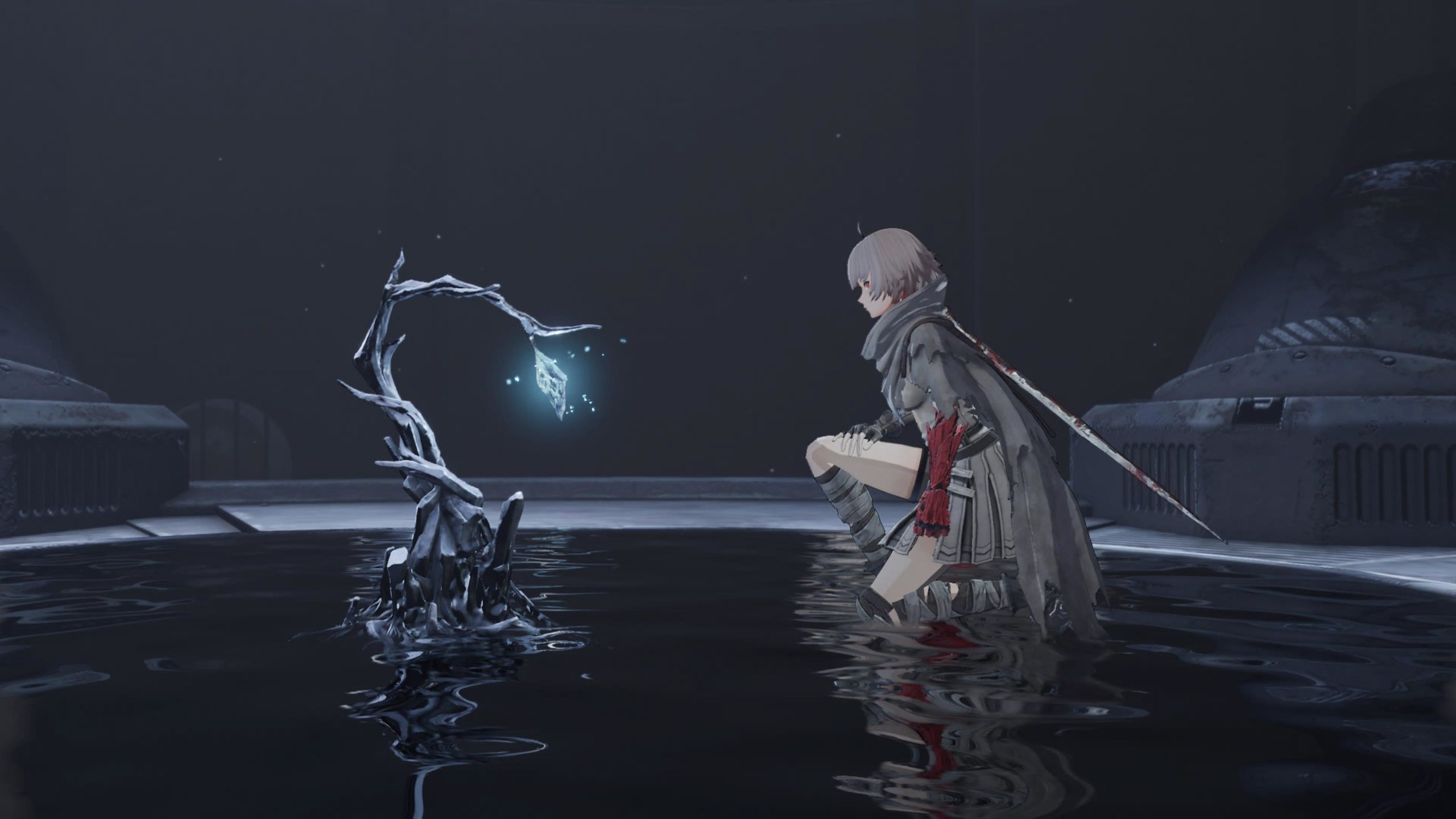
Bladers are like any other Machine. They’re either a Benefit or a Hazard.
As I said in the introduction, Combat in AI Limit may look like a soulslike on the surface, but it does its own thing. It rewards aggression, but only if you can be flawless in your parries and dodges. Your synthetic Blader has a health bar, but not a stamina bar. Instead you have what’s called ‘Sync’ – a measure that moves based on the flow of combat. The bar indicates how synchronised you are as a violent whirlwind of death, and the more flawless your battles the more powerful your strikes.
If you suffer a hit, not only will you lose health, you will also suffer a certain amount of desynchronisation, slowing and weakening your attacks, until you can perform a few flawless combos and regain that flow. Special weapon moves, shields, your arm-mounted railgun, and any spells, all these augmentations when used, will use up some (or massive amounts) of that accumulated sync, and require you to build it back up to be at peak fighting form. It means that just like a soulslike you are constantly monitoring two important bars, but in a new and different way. It’s not about the ‘stamina’ bar depleting, it’s about maintaining a combat flow that keeps the bar in the sweet spot between a perfect 90%+ and the next rung, alternating between using moves and spells and then building back up to full. Because the synchronisation builds back up with hits, it encourages the aggression, ala Bloodborne, and gives AI Limit its own unique risk/reward mechanic. It’s a well-thought-out refinement of systems we know and understand and will feel relatively natural to seasoned souls players, nicely matching the kind of utilisation/machine thinking of the synthetic you control.
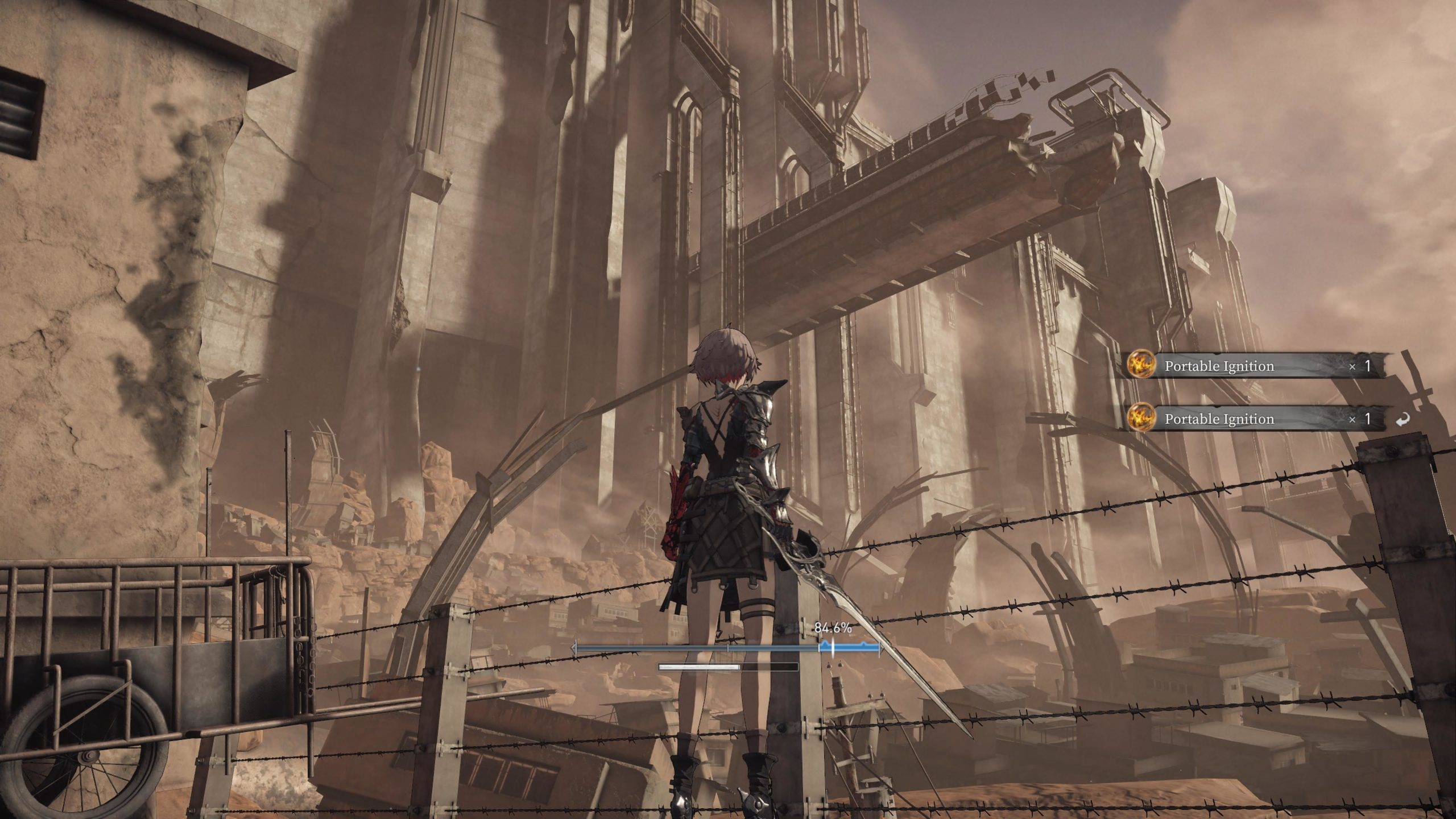
AI Limit has a strong grasp of the interconnected, secret-area filled, shortcut-finding mazes that have characterised this genre ever since Dark Souls. Each level is a compelling maze, and I enjoyed exploring throughout the game. Most have just the right level of simpler enemies (although almost any can defeat you in a combo) mixed with the harder types and a few mini-bosses. The locales often made me think of Nier Automata more than the high-tech of Stellar Blade, more the sun-drenched cyber desert of Blade Runner 2049, than the neon and rain-slicked streets of the original. AI Limit’s environments lean heavily into the dystopian and a lost golden age when gravity-defying architecture was created, but now its purpose and original function are forgotten.
Graphically AI Limit walks the AA line, neither the insane fidelity of Stellar Blade, nor rough by any measure. Its graphics serve the game and look great throughout. Where it shines is the design of these often cavernous spaces, creating grandeur and spectacle like the very best of FromSoft’s titles but with a distinctly science fiction angle. Standouts include the Church’s tower cathedral edifices and the depths of the Necro’s lairs.
AI Limit doesn’t shy away from the difficulty of the genre. Many enemies can take you out based on a moment’s hesitation, an incorrect button press, or not utilising the right parry, shield or dodge to weather their bigger attacks. Your Blader has a special arm that gains four distinct functions by the game’s middle point, but only one can be used at any one time. First is the relatively responsive parry system (none of the clunky slow parry of Code Vein here), which can be changed to a shield that depletes sync as you hold it up. Having the parry will mean you cannot tank any hits, but with deft timing you can knock an enemy, and a lot of bosses, down for a heavy punishment hit. The shield tanks a combo or two, and really does stop damage, but not statuses, and when the shield overloads you can fire its absorbed energy back at enemies. This was a very effective way to get through early bosses.
The other two functions I found much more minor – a power-up based on the Piercing status that enhances your damage at the cost of life, and a secondary dodge that can leave an exploding ghost of your Blader behind to damage enemies.
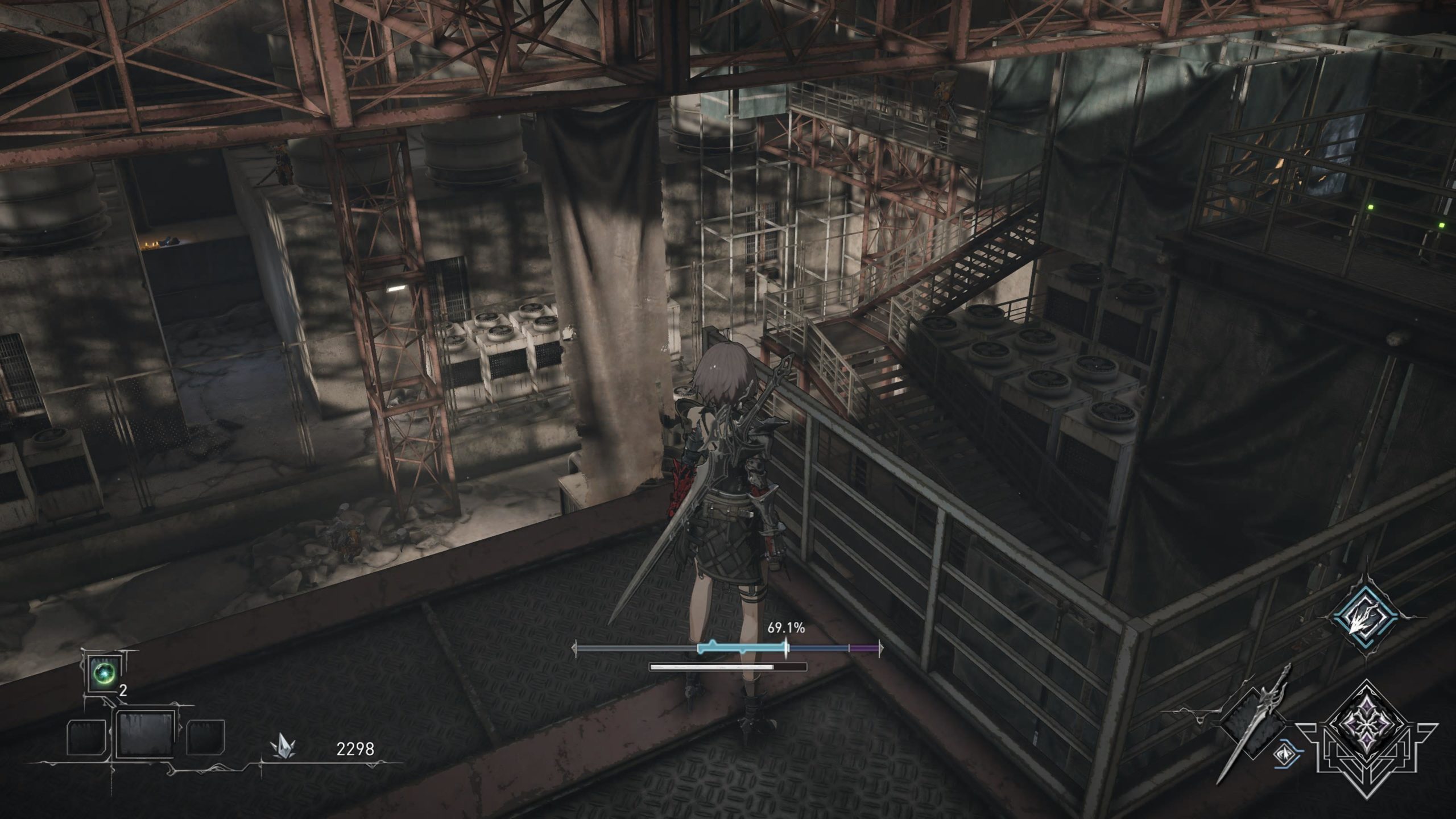
In the beginning you’d be forgiven for thinking the enemy design was a little simple – red zombie-like creatures in the sewers, and the odd human or equivalent. But as the game progresses each area comes with new enemy types, new challenges, and new moves to learn to beat them. The Necro that appear as you breach the walls of Havenswell are particularly interesting, have a lot of variety and packed a difficulty-jumping punch.
Same with bosses. From spiky death creatures borne of the mud, to slumlord gang leaders, to hovering status-inflicting monstrosities. They were good test of skill and interestingly designed, if a little forgettable after the fact. They don’t generally have the most memorable designs, like some bosses I’m sure genre-afficionados could name, but they were fun. Maybe the more memorable are the multi-limbed mech AI knights that fight for the church.
Most welcome from a combat perspective were the Lost Bladers, humanoid young women like yourself who have lost their way or succumbed to the corruption. These provided the best skill-test training of any of the encounters, and I was always pleased of the challenge when I happened upon one. Right up until the hardest of them, who had me raging.
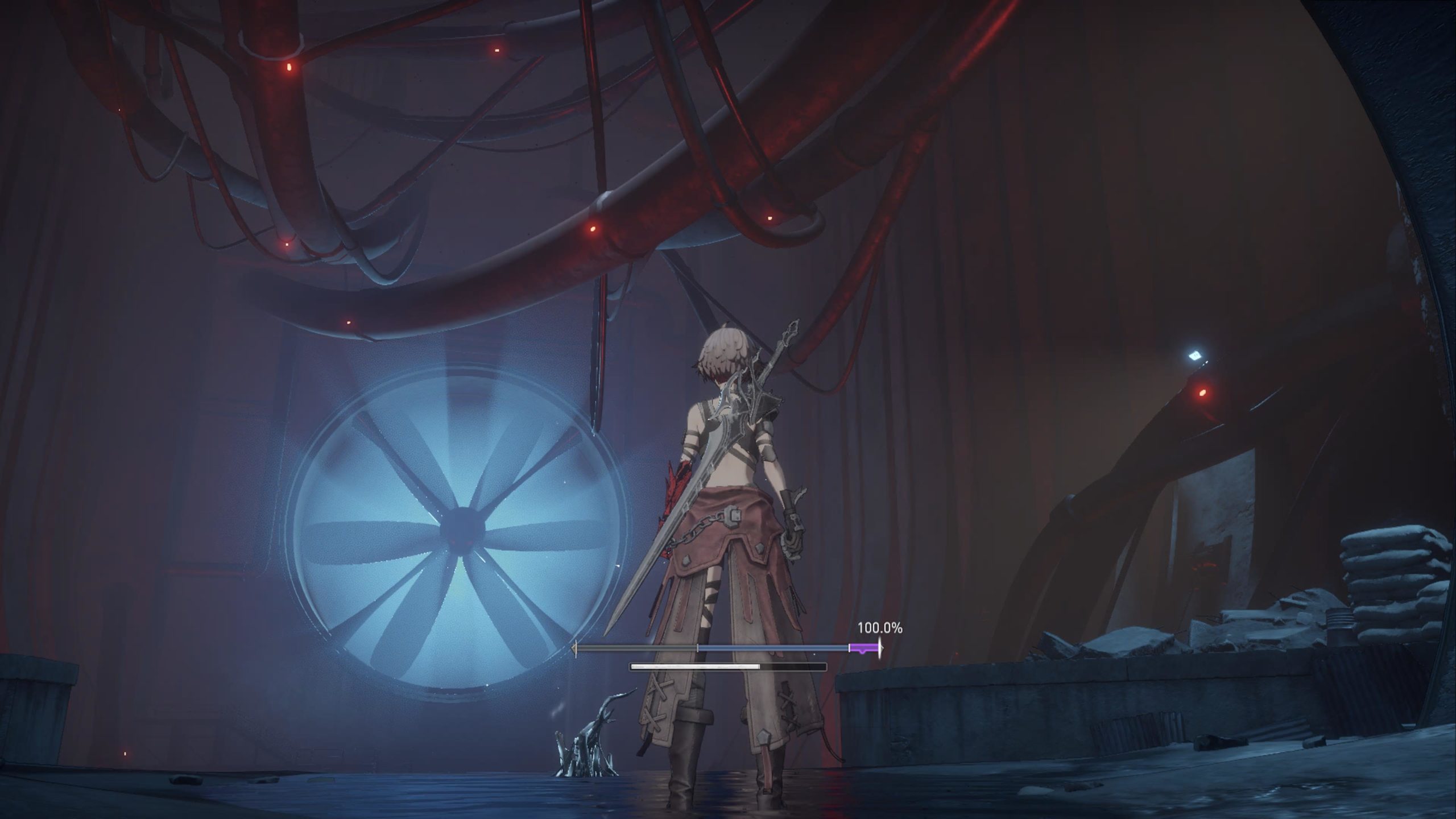
GlitchMOB
The stats and builds within AI Limit are actually fairly simple and certainly not on the forefront of the soulslikes that go for masses of different builds. There are a dozen or so weapons, around 6 of which you get fairly early in the first level allowing for experimenting with which you prefer. You’ve got your fast and slow varieties, swords, double swords, greatswords, axes, poles, and even a scary scythe.
From the perspective of armour and equipment though there’s not more than a dozen there either. Some headgear makes major difference to surviving the various statuses – Infection etc – so you’ll want the right one if a particular boss inflicts them. You get different Nucleus (like an operating system), which can make the sync rate shorter or longer and this will play a part in making certain weapons easier, or just making the whole run harder. And lastly, there are Seals which are stat-boosting gear you can equip in yet another system, such as fire resistance, or 10% more health.
AI Limit is a smaller, more honed experience than something sprawling like Lords of the Fallen. It concentrates on fewer core things, but that’s to its credit as they all work considerably well. This may not be the one for those who love to create infinite builds, and it also doesn’t present the 100 or so bosses of something like Black Myth Wukong for example, keeping to a more manageable 30 or so if you include the miniboss Bladers. In terms of longevity it also did itself a disservice halfway through and began forcing your exploration back through all the previous areas all over again, but with new routes. While they were new mazes, they were the same recognisable areas, like sewers or desert villages that I’d already explored once, and this did make some of the late game exploration feel duller.
The soundtrack of Ai Limit was dark and menacing and just the right side of ambient, often relying on wind and soft pads for large swathes, and then seamlessly and dynamically rising into battle refrains. At time of playing, I did experience a few bugs – crashes back to the home screen or not being able reload as the ground was missing and I fell to my death on a loop. I’m not marking the game down for these, as they seem to be fixed at launch.
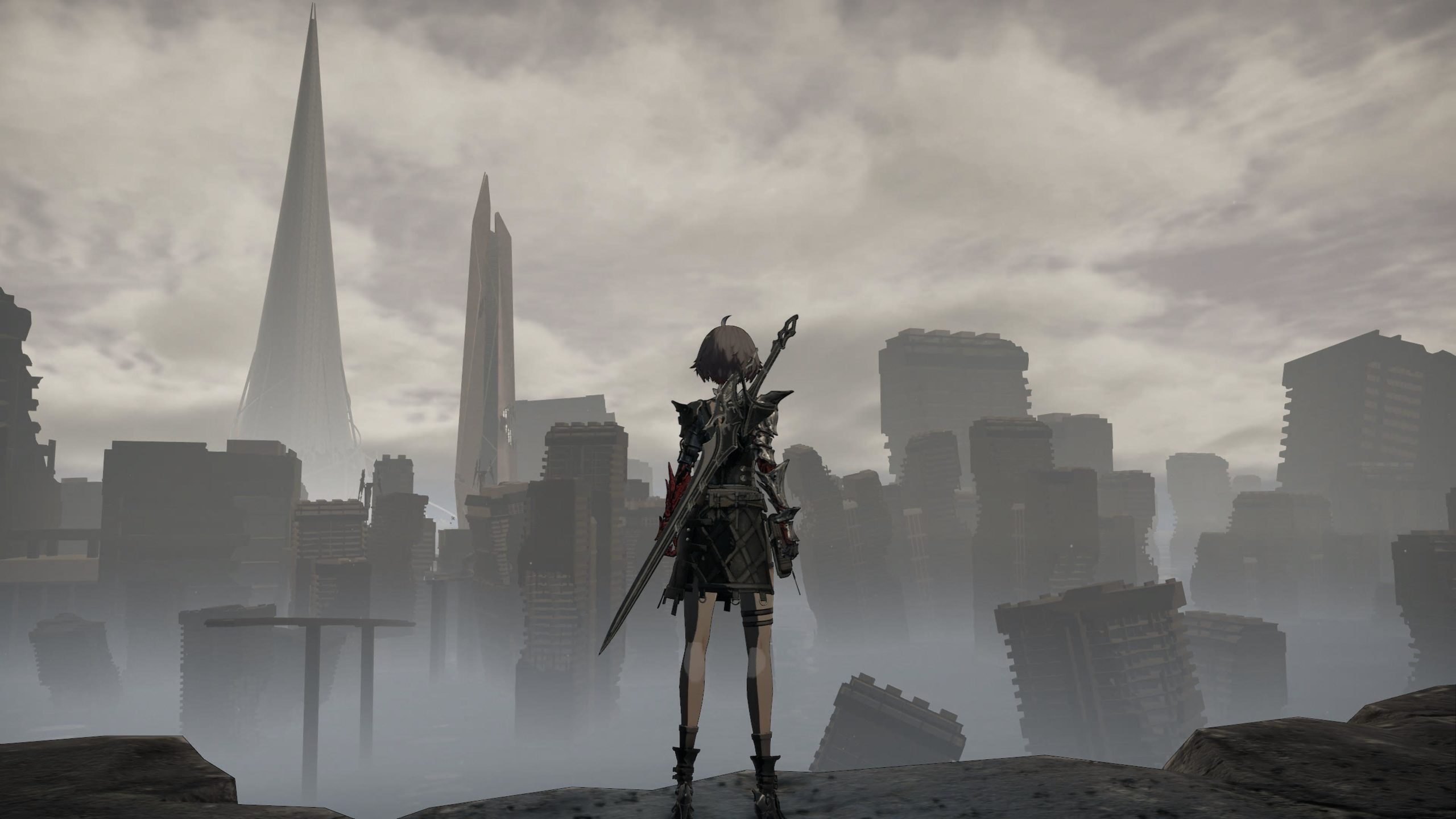
Control_Alt_Delete
AI Limit joins Stellar Blade as one of the new breed of action RPG, a soulslike only in look and feel, where the punishment of losing souls or their equivalent, has been replaced with a price for revival. Branches are placed just in front of bosses almost throughout the whole game, removing the dreaded death run back to challenge them again. And combat doesn’t rely on stamina and slow rolls, opting instead for a polished and fast system of parrying, dodging and deftly using your synchronisation skills to achieve victory.
This well-realised action adventure won me over with its refreshing take on tropes, its epic lost civilisation and its moment-to-moment combat loop. Its difficulty is high, but it is just the right side of punishing. And it manages to be far more than just a Code Vein copy – certainly it has a better combat system and world design throughout. If you liked Stellar Blade last year, this is a stripped-back approach with a slither more of the soulslike bones left in.
AI Limit is out now for PlayStation 5 (review platform), and PC via Steam.
Developers: Sense Games
Publisher: CE-Asia
Disclaimer: In order to complete this review, we were provided with a promotional copy of the game. For our full review policy, please go here.
If you enjoyed this article or any more of our content, please consider our Patreon.
Make sure to follow Finger Guns on our social channels. Twitter, Facebook, Twitch, Spotify or Apple Podcasts – to keep up to date on our news, reviews and features
